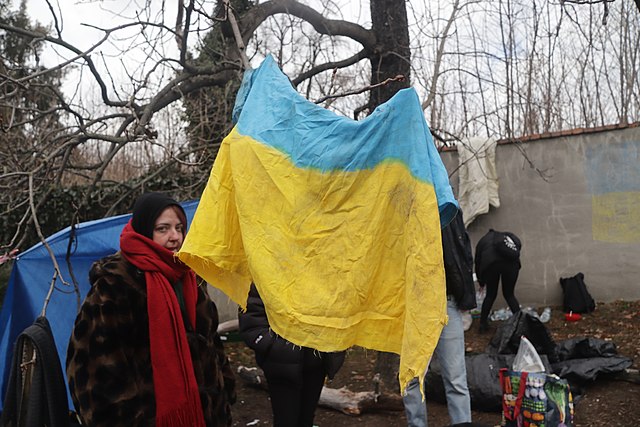Two journalists from The Associated Press published an astonishing piece telling the story of their escape from Mariupol, Ukraine. While reporting there, they passed many Russian checkpoints, captured images of burning buildings and bodies and disguised themselves as surgeons to avoid the Russians who were searching for them.
Reporters Mstyuslav Chernov and Evgeniy Maloletka covered the devastating events in Ukraine for weeks. They exhibit quality journalism and show the world what the essence of journalism is—telling people’s stories, raising awareness of major events and helping people—one life at a time.
THE PRESS UNDER ATTACK
Trust in the media steadily decreased over the past few years. Today, only 29% of Americans trust the United States media, Poynter reports. Due to increased political polarization and the conversation of unfair reporting after presidential elections, many people became wary of subjective reporting. However, while journalists may not be as respected as they once were, many of them still have the desire to report and share stories of people around the world.
Journalists are meant to sit in the hard places, track down leads and tell stories that shape the world. Oftentimes, their job places them in traumatic, sometimes dangerous, situations. As of March 21, there were four journalists who died in Ukraine as they worked to cover the war. The Boston Globe writes that “while journalists are caught in the crossfire, Ukraine’s minister of defense put it well when he commented on the attacks this week: ‘The truth is the target.’”
Russia outlawed any form of reporting that goes against the nation’s official statements, the New York Post reports. Journalists caught publishing information against the state can be imprisoned for up to 15 years. RT America recently began to shut down—one of the only Russian-American news organizations in the world, CNN reports.
QUALITY REPORTING
Chernov and Maloletka display quality reporting in Mariupol. “I have never, ever felt that breaking the silence was so important,” Chernov said. As the only reporters left in the city, the Ukrainians around them begged them to continue reporting. “The doctors pleaded with us to film families bringing in their own dead and wounded, and let us use their dwindling generator power for our cameras. No one knows what’s going on in our city, they said.”
While spreading awareness about the attacks, they found themselves in the midst of them. “A shell exploded on the roof of the store, throwing me to the ground outside. I tensed, awaiting a second hit, and cursed myself a hundred times because my camera wasn’t on to record it,” Chernov said, recounting his traumatic experiences.
Chernov and Maloletka reported on the attack on a maternity hospital. “The Russian Embassy in London put out two tweets calling the AP photos fake and claiming a pregnant woman was an actress,” Chernov said. “The Russian ambassador held up copies of the photos at a U.N. Security Council meeting and repeated lies about the attack on the maternity hospital.”
Leaving Mariupol caused mixed emotions for the reporters. “I felt amazingly grateful to the soldiers, but also numb. And ashamed that I was leaving,” Chernov said. “We were the last journalists in Mariupol. Now there are none.”
To further the spread of truth through written narratives and visual graphics, more reporters like Chernov and Maloletka are needed around the world. Without journalists putting their lives on the line, truth would not spread from Ukraine to the rest of the world. Journalists who pursue the truth, expose evil and help people around them can impact the world.












